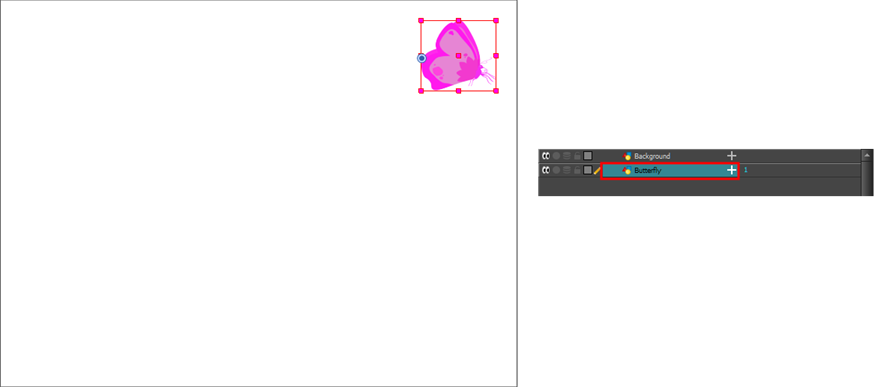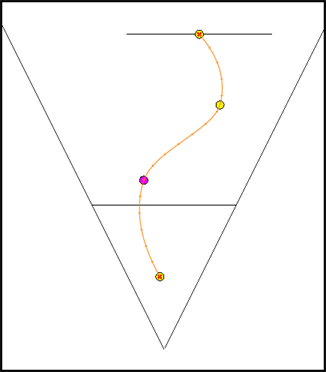Modifying a Path in the Camera, Top and Side Views
Camera moves and motion paths can become quite advanced, especially with moves through 3D space. Harmony provides tools to view your camera’s path and make adjustments to it from both a 2D and 3D perspective.
You can display the trajectory of a motion path when you select an object in the Timeline or Camera view.
A motion path is easy to manipulate. One important concept to understand is that a trajectory contains both keyframes and control points. Both can be used to shape a path; each have their own significance and behaviour, however only keyframes appear in the Timeline view.
| • | Keyframes have a transformation value and a position in space at a given frame. Keyframes are locked in time. |
| • | Control points have a position but no fixed frame or timing. It is mainly used to deform a trajectory. There are no velocity handles available on a control point. The velocity segments are set between keyframes only, making curves and trajectories much smoother. Control points can only be added on a 3D path. |
You can set the default Continuity, Bias and Tension parameters in the Preferences panel.
Continuity: Controls the smoothness of a transition between the segments joined by a point.

Tension: Controls how sharply the path bends as it passes through a control point or keyframe.

Bias: Controls the slope of the path so it flows towards one side of the motion point or the other.

When you select a control point on a path, you can switch between a rounded or square corner by using the Linear/Curve command.
- Verify that the Camera view (click its tab) is selected and that the layer whose trajectory you want to display is selected in the Timeline view.

- From the top menu, select View > Show > Control or press Shift + F11.

- In the Timeline or Camera view, select the peg or layer on which you want to add a control point.
- If the selected element’s trajectory is not displayed, select View > Show > Control from the top menu or press Shift + F11.
The trajectory appears in the Camera, Top, Side and Perspective views.

- Add control points on a 3D path trajectory by placing the cursor where you want to add the point and press P once. If you hold the key down, control points will be added continuously until you release the key.

- In the Camera view, use the Transform
 tool select a point to convert.
tool select a point to convert.
- To convert the point:
| ‣ | From the top menu, select Animation > Lock in Time. |
| ‣ | In the Function view or Function Editor, select the keyframe to convert and click the Lock in Time |

| ‣ | Press Alt+L. |
- From the top menu, select Edit > Preferences (Windows) or Stage Advanced > Preferences (Mac OS X).
The Preferences dialog box opens.
- Select the Camera tab and adjust the parameters in the Control Points section.

- In the Timeline view, double-click the layer that contains the point you want to convert.
The Layer Properties window opens.
- On the Transformation tab, select the 3D Path option.
- In the Tools toolbar, select the Transform
 tool or press Shift + T.
tool or press Shift + T.
- In the Camera view, select the point to convert.
- From the top menu, select Animation > Linear Motion.








